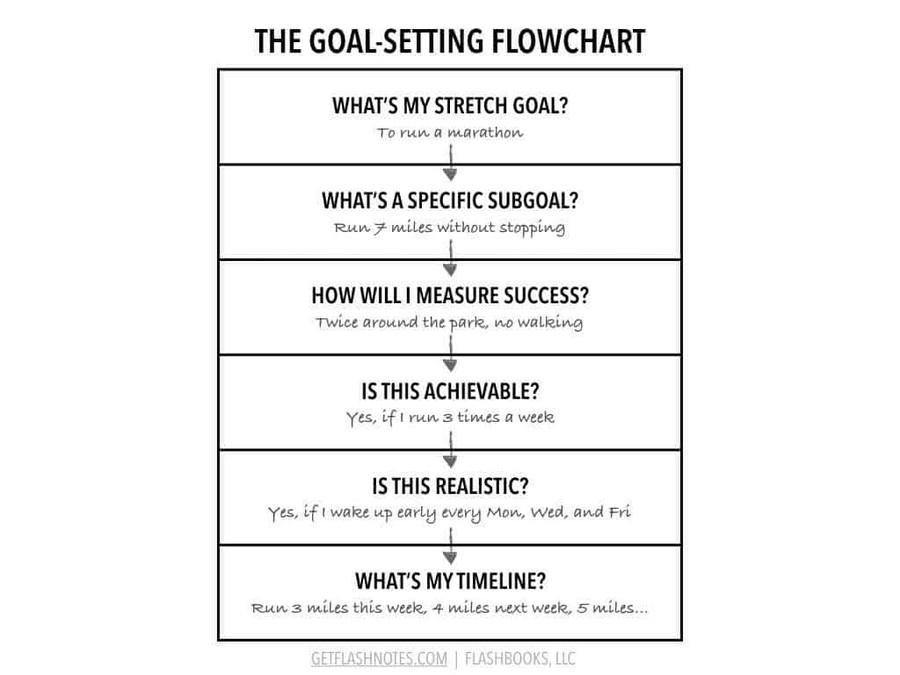The classic approach to goal setting
First, let’s define what SMART means.
- Specific. Your goal should be well defined, clear, and unambiguous.
- Measurable. You can easily measure your progress towards the accomplishment of the goal.
- Achievable. The goal should seem attainable and not impossible to achieve.
- Relevant. The goal should be aligned with your current priorities.
- Timely. Your goal should have a clearly defined timeline, including a starting date and a target end date.
24
186 reads
CURATED FROM
IDEAS CURATED BY
Ness Labs provides content, coaching, courses and community to help makers put their minds at work. Apply evidence-based strategies to your daily life, discover the latest in neuroscience research, and connect with fellow curious minds.
A system without a goal is like a marathon without a finish line. But a system with a bad goal will result in a bad outcome. Traditional goal-setting methods use the SMART framework. SMART stands for Specific, Measurable, Achievable, Relevant, and Timely. Sounds great for small, short-term goals, but not so much for ambitious, long-term ones. If you have one or several ambitious goals—such as learning how to code, studying a new language, writing a book, growing a newsletter, becoming a designer—you may want to consider making a PACT as an alternative to SMART goals.
“
The idea is part of this collection:
Learn more about productivity with this collection
How to practice self-compassion
How to identify and challenge negative self-talk
How to build self-confidence
Related collections
Similar ideas to The classic approach to goal setting
The best ways to set goals
A good method to achieve your goal is to break it down into bite-size pieces using SMART goals.
- S - Specific. Create clear and achievable goals. Instead of wanting to write a book this year, aim for writing one chapter every month.
- ...
The Goal-Setting Flow Chart
Here is an example of a flowchart to use when setting a goal:
WHAT IS YOUR STRETCH GOAL?
To run a marathon
WHAT IS A SPECIFIC SUB-GOAL?
Run seven miles without stopping
HOW WILL YOU MEASURE SUCCESS?
Twice aroun...
Read & Learn
20x Faster
without
deepstash
with
deepstash
with
deepstash
Personalized microlearning
—
100+ Learning Journeys
—
Access to 200,000+ ideas
—
Access to the mobile app
—
Unlimited idea saving
—
—
Unlimited history
—
—
Unlimited listening to ideas
—
—
Downloading & offline access
—
—
Supercharge your mind with one idea per day
Enter your email and spend 1 minute every day to learn something new.
I agree to receive email updates
